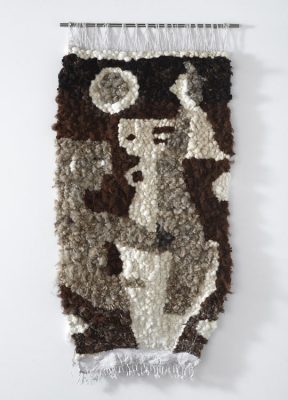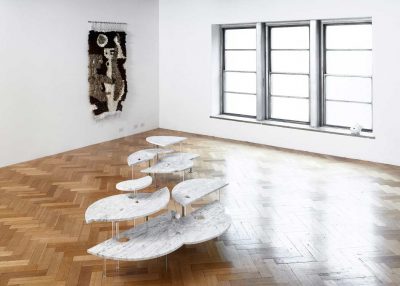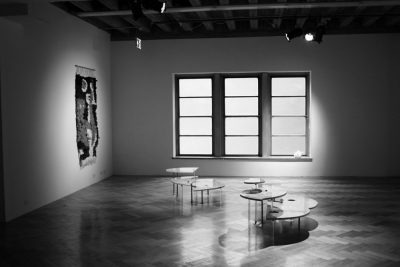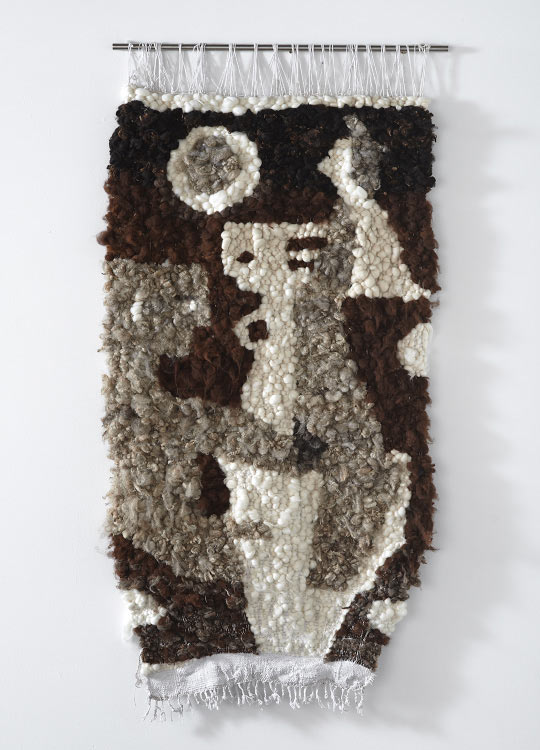With artists Jeremy Bakker, Belle Bassin, David Capra, Helen Johnson, Veronica Kent, Sanne Mestrom and Jake Walker.
Essay extract by Zara Stanhope, from the exhibition’s catalogue essay:
…How can the past play a productive role in the constant reinvention of culture? Ubiquitously present, can history be reimagined to avoid becoming entrenched tradition or revered memorial, a convention or authority?
Sanné Mestrom’s Temple provokes such questions. Crossing the boundaries of art and design, installation and décor, the work evokes a liturgy of forms and names from art history: Eileen Gray, Pablo Picasso, Guillaume Corneille, Constantin Brancusi, Isamu Noguchi, Sam Atyeo, Moya Dyring, Ian Fairweather, Leonard French, Robert Jacks…. However, rather than articulate specific international or local precedents, Temple refuses to identify its lineage. In the interweaving of past styles with the viewer’s affective response it suggests the fluidity of aesthetics, of an art made with history…
Full essay by Zara Stanhope
Official Ode to Form website





ODE TO FORM, curated by Kelly Fliedner
Ode to form was an exhibition of works that encapsulated the tension between the “tragic fate and comic misfortune” of Romantic Conceptualism as described by Jörg Heiser. It worked against the notion of the “‘conceptual’ as a closed system controlled by intellectual heroes, but at the same time spoil[ed] the sublime of Romanticism itself.” Ode to form explored the tension between two opposing but prevalent assertions in contemporary art; that a conceptual, cool, depersonalization is a precondition of an art that makes itself checkable and revisable, whilst celebrating the repositioning of the “artist’s hand” within the conceptual framework of contemporary art itself.
The exhibition also attempted to position itself within a broader discussion of the communal and the idea of community in art through the accompanying online publication that focused on the somewhat conflicting notion of an artist as a “single individual creator”. Ode to form light-heartedly acknowledged and was aware of the pitfalls of romanticising–in that sense, rendering sublime–that single individuality, the “artist’s soul”, itself, aiming to strip away any pretension that the artist’s soul as a medium of the otherworldly or godly (while allowing a sense of tragicomic mourning for that secularization to linger on).
While each artist’s practice is distinct, amongst the works was a strong material synergy, through which an elegant post-minimalist aesthetic presided. The exhibition was intended to investigate the connections between the simple beauty of the artists post-minimalist aesthetic and the absurdity and humour of the romantic subjects which Ode to form embraced. Post-minimalism, in this instance, describes artists who use minimalism either as an aesthetic or conceptual reference point, using everyday objects, simple materials, reflecting upon “pure” formalistic aesthetics and quite frequently rejecting them. In Ode to form the simple beauty of post-minimalism is paired with absurdity and humour of romanticism–mocking the conceptual and minimal fixed art object, its plasticity and its concreteness. Each artist participating in Ode to form recognises human faults in perception and explored themes of uncertainty and crisis that are mirrored within post-minimalisms challenge of minimalism itself.
The exhibition was later accompanied by an online publication featuring seven texts on each of the artists by Nicholas Croggon, Simon Maidment, Oliver Watts, Adrian Martin, Anusha Kenny, Zara Stanhope and Christopher Williams-Wynn.
Ode to form has been generously supported by the City of Melbourne through the Arts Grants Program.
All installation photography by Matthew Stanton.
